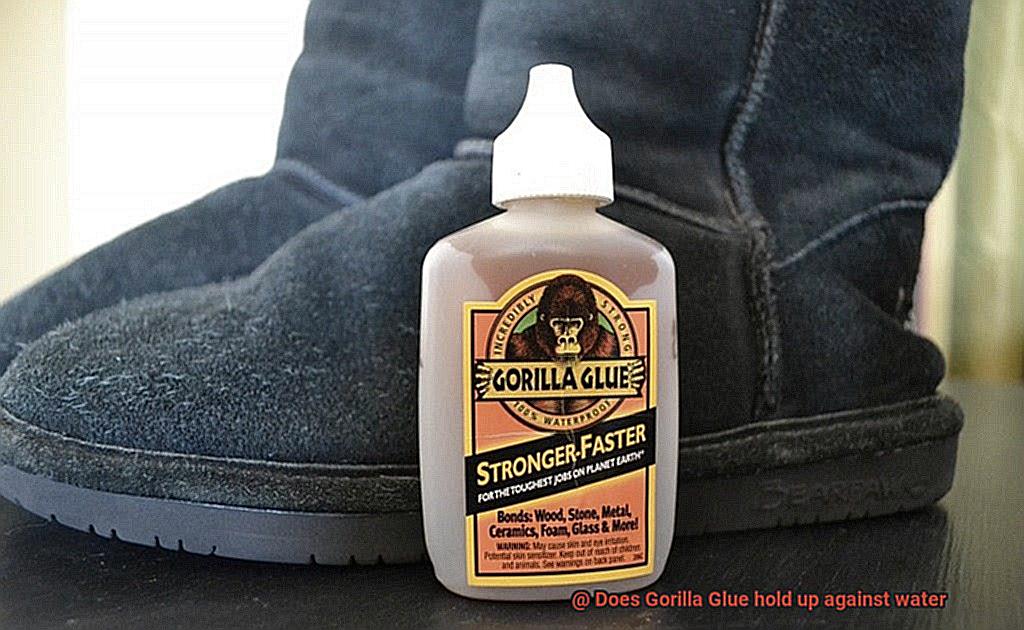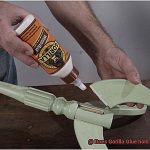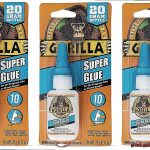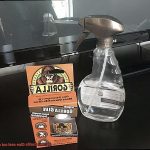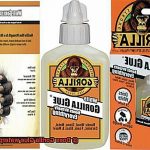Are you tired of your DIY projects falling apart after a few rainy days? Do you want an adhesive that can stand up to water damage and other harsh elements? Look no further than Gorilla Glue. This amazing adhesive has gained popularity among crafters and handymen alike for its strength and versatility. But the big question is: does Gorilla Glue really hold up against water?
You’ll be happy to know that Gorilla Glue is well-known for its waterproof properties, making it ideal for outdoor and marine applications. Whether you’re fixing a boat or constructing a birdhouse, Gorilla Glue is the perfect choice for a long-lasting hold that can withstand all types of weather conditions.
So, what makes Gorilla Glue so good at resisting water damage? Its secret lies in its unique chemical formula. As a polyurethane-based adhesive, it expands as it dries, filling in any gaps or spaces on the surface it’s applied to. This creates an unbreakable bond that not only resists water but also heat, cold, and even chemicals.
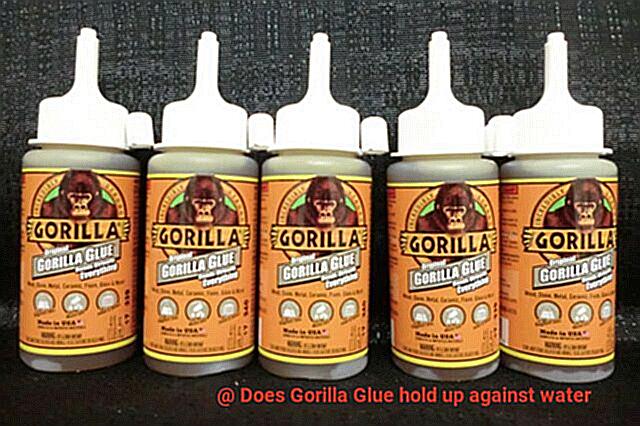
If you’re searching for an adhesive that can truly stand the test of time and nature’s wrath, look no further than Gorilla Glue. With its exceptional waterproof properties, you can trust that your DIY projects will remain strong and secure regardless of what Mother Nature throws their way. So go ahead and give Gorilla Glue a try – you won’t be disappointed.
Exploring the Versatility of Gorilla Glue
Contents
- 1 Exploring the Versatility of Gorilla Glue
- 2 Does Gorilla Glue Hold Up Against Water?
- 3 The Benefits of Using Gorilla Glue in Wet Environments
- 4 Preparing the Surface Before Applying Gorilla Glue
- 5 Applying Pressure to Strengthen the Bond
- 6 How to Use Gorilla Glue Sparingly
- 7 Is Gorilla Glue Completely Waterproof?
- 8 Common Mistakes When Using Gorilla Glue in Wet Environments
- 9 Conclusion
Gorilla Glue is a game-changer when it comes to adhesives. It’s known for its superior strength, durability, and its ability to bond to almost any surface. But, can it handle exposure to water and moisture? The answer is a resounding yes. Gorilla Glue is waterproof once it has fully cured, making it an ideal adhesive for a wide range of applications.
In fact, Gorilla Glue’s unique formula is designed to hold up against harsh environmental conditions, including water. Its versatility lies in its ability to bond to almost any surface, even when wet. Whether you’re repairing a leaky garden hose or fixing a boat’s hull, Gorilla Glue is an adhesive that you can rely on.
But how do you ensure the strongest bond possible in wet environments? Proper preparation is key. The surface must be clean and dry before applying the glue. Any loose or flaky material should be removed to guarantee a solid bond. Applying pressure to the glued surfaces while the glue dries can also help strengthen the bond further.
It’s important to note that Gorilla Glue expands as it dries, so it’s essential to use it sparingly and clamp surfaces together while it dries to prevent any excess from causing a mess. Once cured, Gorilla Glue is water-resistant and can be used for outdoor applications.
Does Gorilla Glue Hold Up Against Water?
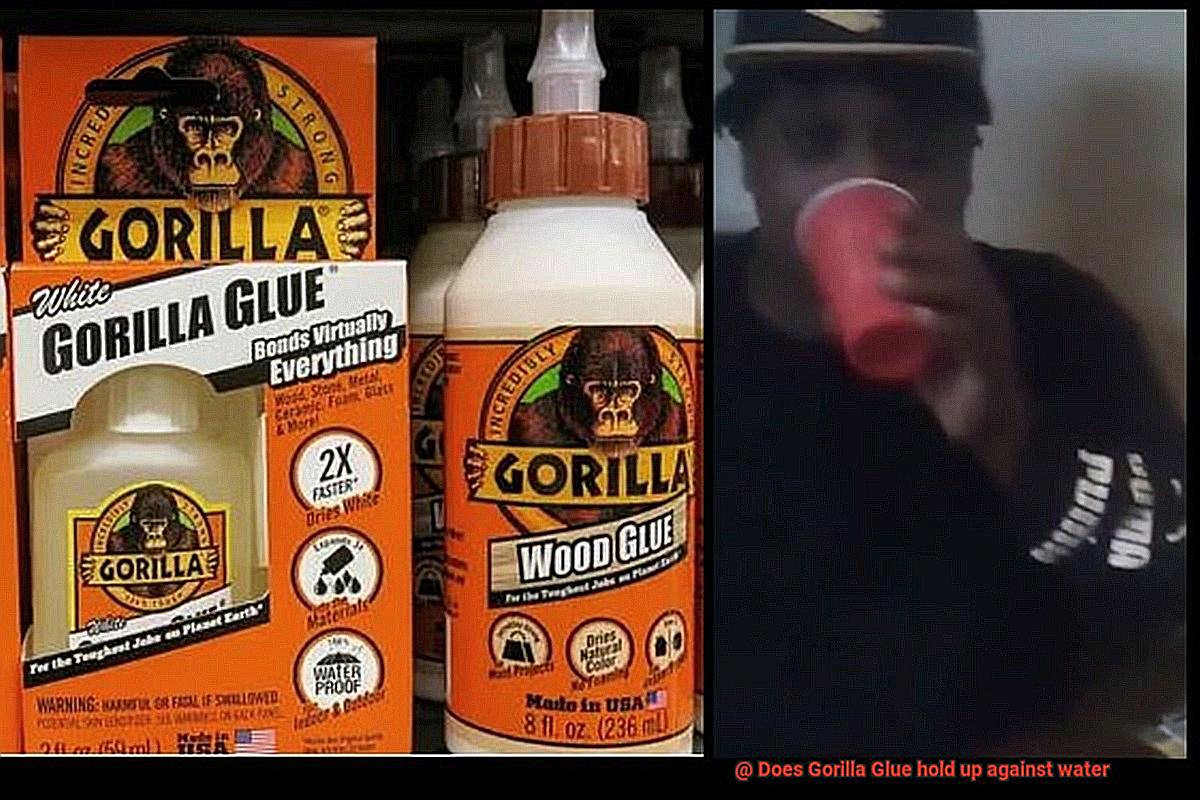
Gorilla Glue is a household name in the world of adhesives, known for its strength, versatility, and ability to bond almost anything together. But when it comes to water, can Gorilla Glue hold up against it? As an expert in this field, I’m here to tell you that yes, it can – but with some conditions.
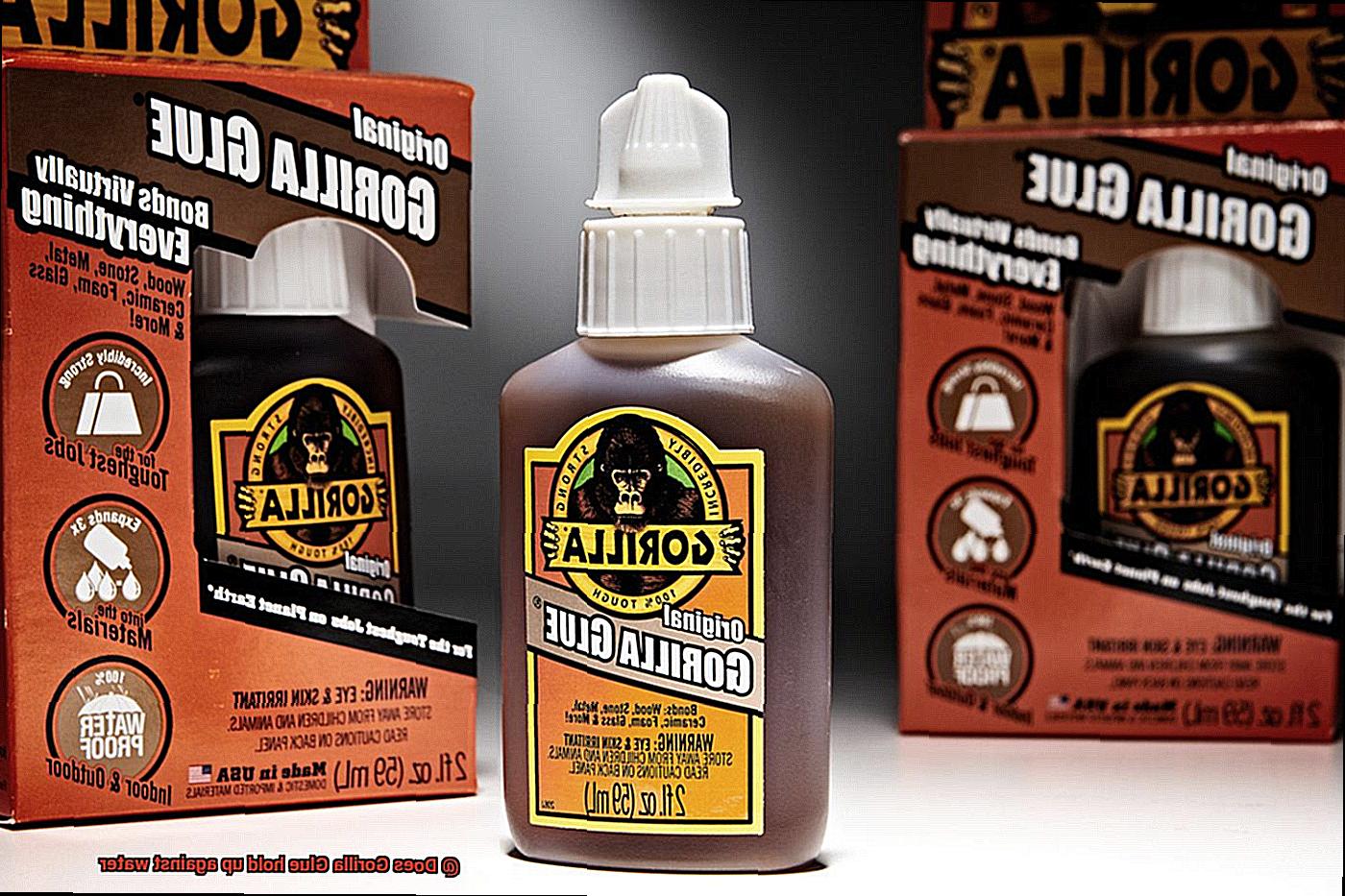
First things first, let’s clear up a common misconception. While Gorilla Glue is water-resistant, it’s not completely waterproof. This means that while it can withstand small amounts of water exposure, prolonged submersion in water can weaken the bond. If you’re planning on using Gorilla Glue in a wet environment, make sure it’s fully cured and dried before exposing it to any water.
Another important factor to consider is the surface you’re applying the glue to. Gorilla glue works best on porous surfaces that allow the glue to penetrate and create a strong bond. Non-porous surfaces like metal and plastic may need additional preparation before applying the glue to ensure optimal bonding.
In addition, Gorilla Glue can expand as it dries, which can cause problems if too much glue is applied or if it comes into contact with water before fully curing. Be sure to use Gorilla Glue sparingly and give it enough time to dry and cure before exposing it to any moisture.
To help you better understand how Gorilla Glue holds up against water, here are some key takeaways:
- Gorilla Glue is water-resistant, not waterproof.
- It can withstand small amounts of water exposure but is not recommended for prolonged submersion.
- The effectiveness of Gorilla Glue against water depends on the surface it’s applied to.
- It works best on porous surfaces that allow the glue to penetrate and create a strong bond.
- Non-porous surfaces may require additional preparation before applying the glue.
- Gorilla Glue can expand as it dries, so use it sparingly and allow ample time for drying and curing.
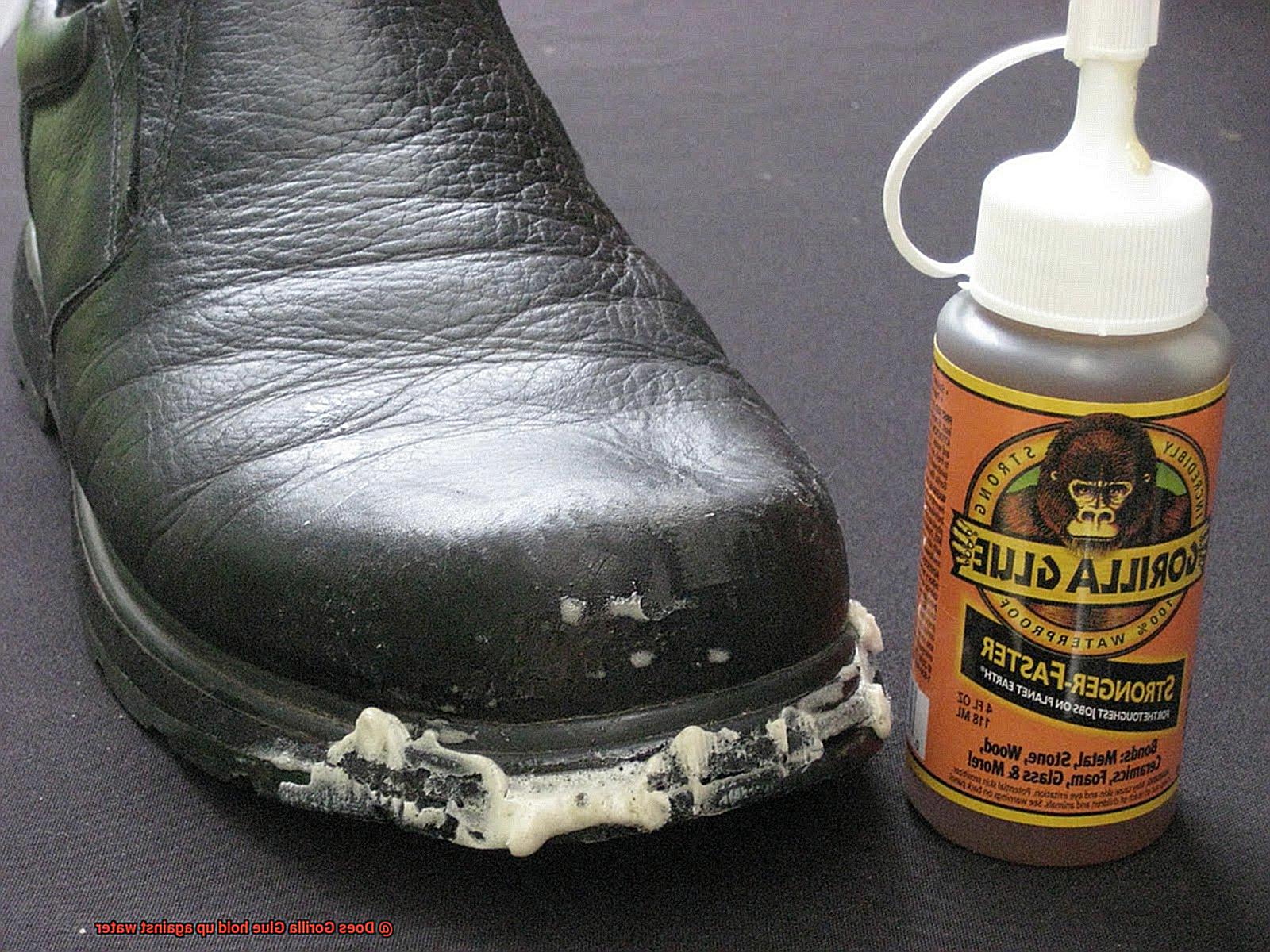
The Benefits of Using Gorilla Glue in Wet Environments
This polyurethane-based adhesive is known for its exceptional strength and versatile bonding capabilities. And when it comes to wet environments, Gorilla Glue truly stands out.
One of the key benefits of Gorilla Glue is its ability to hold up against water and moisture. This is because the glue is moisture-activated. When exposed to water, the glue expands and creates a strong bond, filling any gaps or voids in the material being bonded. This feature makes it ideal for various applications, including those in wet environments.
But that’s not all – Gorilla Glue also offers waterproof properties once fully cured. This means that even if the area where the glue was applied gets wet, the bond will not be compromised. Whether you’re repairing a leaky pipe or building a boat, Gorilla Glue’s durability ensures that your project will hold up over time.
In addition to its waterproof properties, Gorilla Glue is also resistant to temperature changes. It can withstand extreme temperatures without losing its bonding capabilities, making it ideal for use in outdoor applications where temperature fluctuations are common.
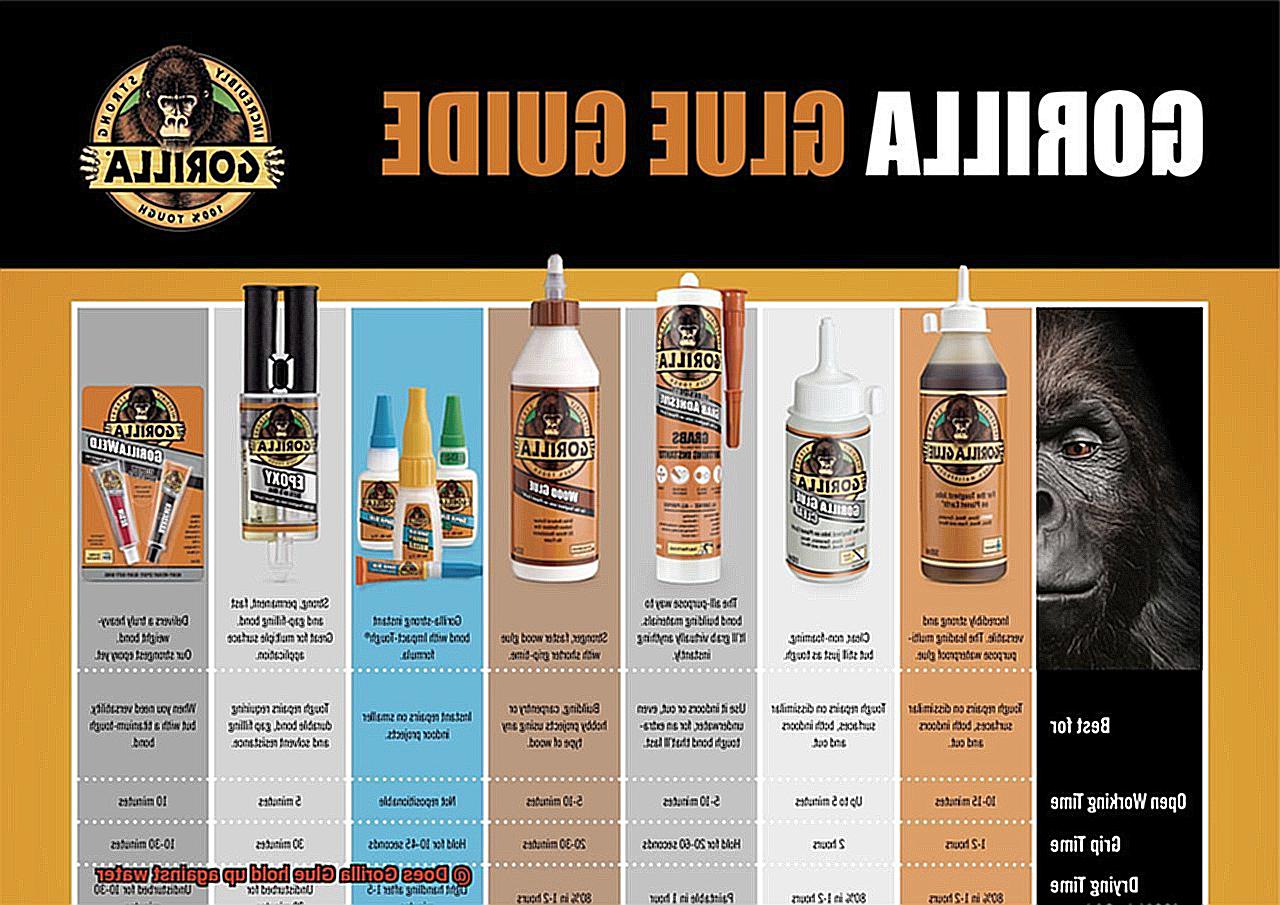
Overall, using Gorilla Glue in wet environments offers countless benefits, including its moisture-activated expansion, waterproof properties, and resistance to temperature changes. Its strength and versatility make it a popular choice for applications where exposure to water or other liquids is a risk. Whether you’re repairing plumbing fixtures or building outdoor furniture, Gorilla Glue has got you covered.
Preparing the Surface Before Applying Gorilla Glue
If you’re looking for a strong, durable bond for your project, Gorilla Glue is an excellent choice. But to ensure that it holds up against water and other elements, you need to prepare the surface properly before applying the glue.
The first step in preparing the surface is cleaning. Any debris, dirt, or oil can hinder the glue’s ability to bond effectively. To clean the surface, use a damp cloth or mild soap and water solution. Avoid harsh chemicals as they can leave behind residue that may affect the bond. Once you’ve cleaned the surface, let it dry completely before moving on to the next step.
If the surface is rough or porous, sanding it lightly can help create a smoother and more even surface for the glue to bond to. After sanding, wipe away any dust before applying the glue.
For surfaces that are particularly oily or greasy, like kitchen counters or car parts, a degreaser is necessary to remove any residue. Acetone or rubbing alcohol can also be effective in removing oils and grease from surfaces. However, make sure to let the surface dry completely before applying the glue.
Applying Pressure to Strengthen the Bond
Look no further than Gorilla Glue, a powerful adhesive that expands as it dries, filling gaps and creating a tight seal. However, to ensure a lasting bond, applying pressure during the bonding process is crucial.
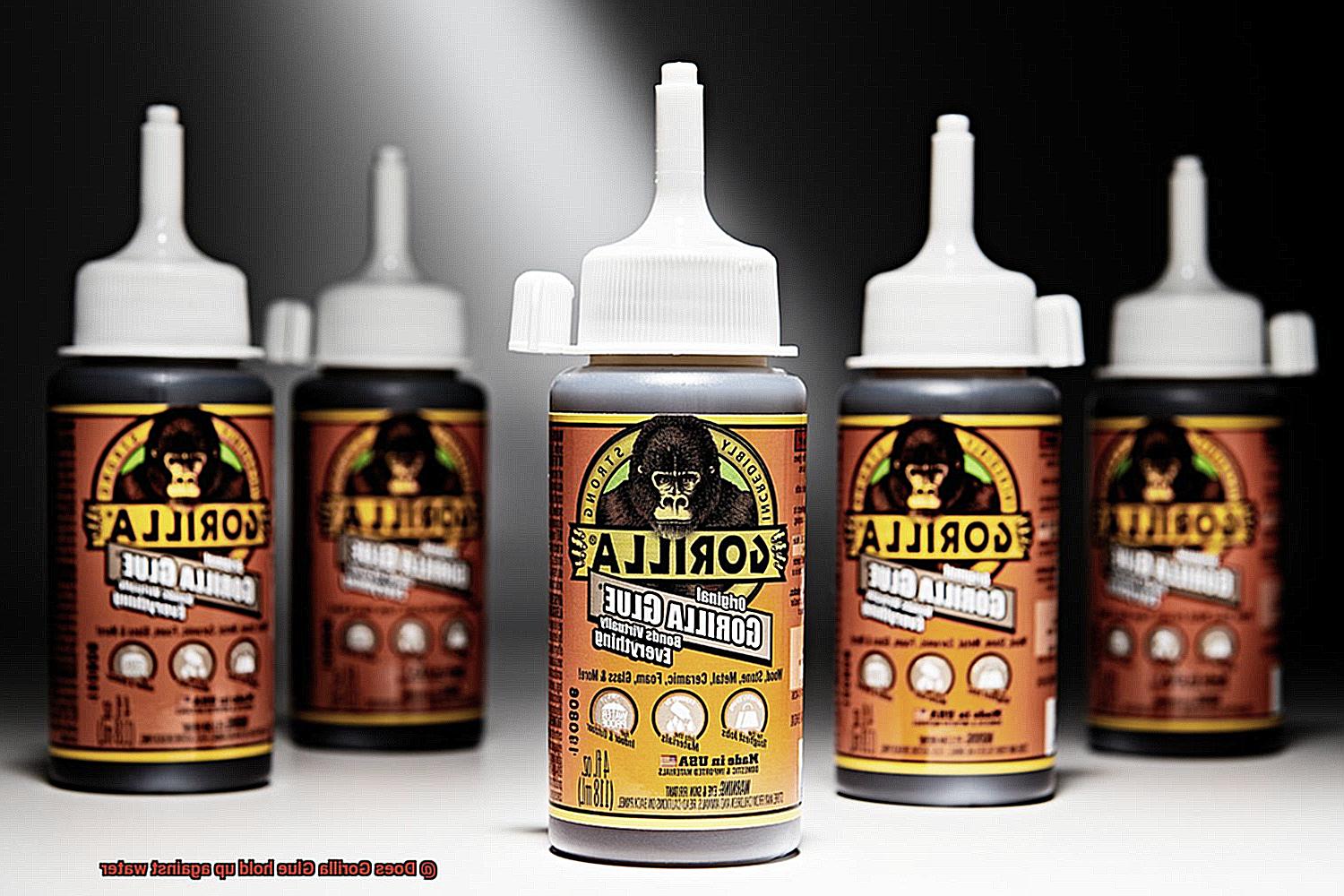
When using Gorilla Glue, clamping the bonded surfaces together tightly while the glue dries is essential for optimal results. The amount of pressure required depends on the materials being bonded and the size of the surfaces. For larger surfaces or difficult-to-bond materials, more pressure for a longer period may be necessary. A minimum of 2 hours of clamping time is recommended for most projects.
But that’s not all – environmental factors can also affect the strength of the bond. Gorilla Glue works best at room temperature (between 70-80 degrees Fahrenheit) with low humidity levels (less than 65%). If it’s too cold or humid, drying time may increase and weaken the bond.
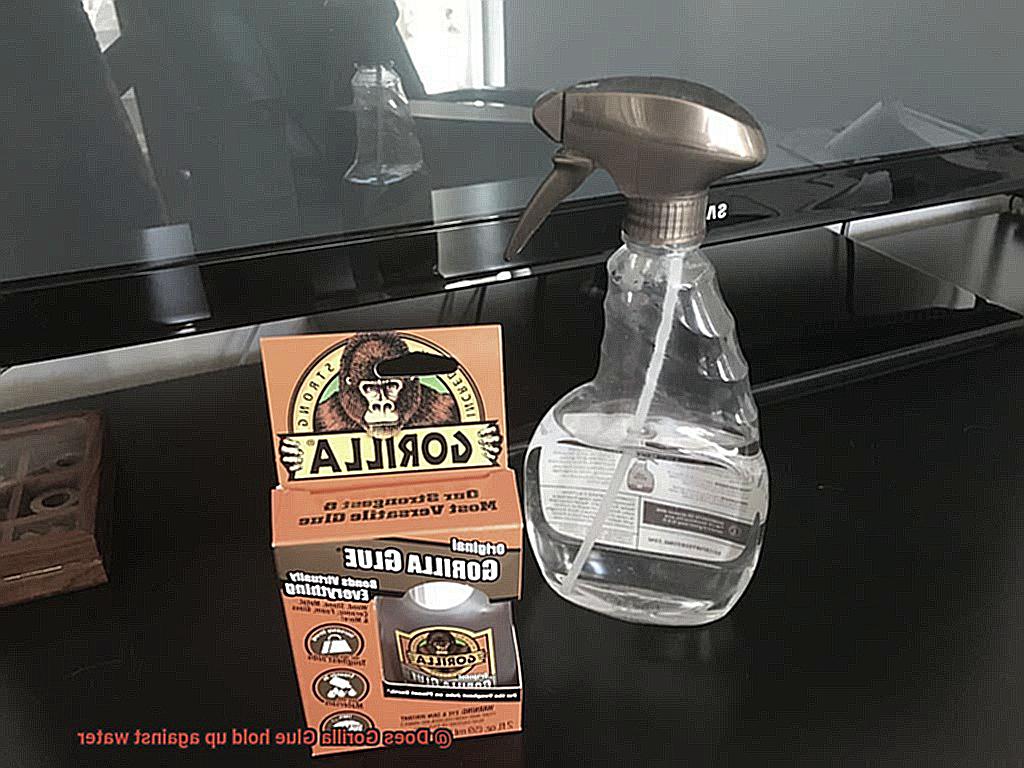
Proper application techniques are also crucial. Apply a small amount of glue to one surface and join the surfaces together while the glue is still wet. Excess glue should be wiped away immediately before it dries.
In summary, follow these tips for a strong and lasting bond with Gorilla Glue:
- Clean and prepare surfaces properly
- Apply glue to only one surface
- Clamp surfaces together tightly for a minimum of 2 hours
- Control environmental factors like temperature and humidity
- Wipe away excess glue immediately
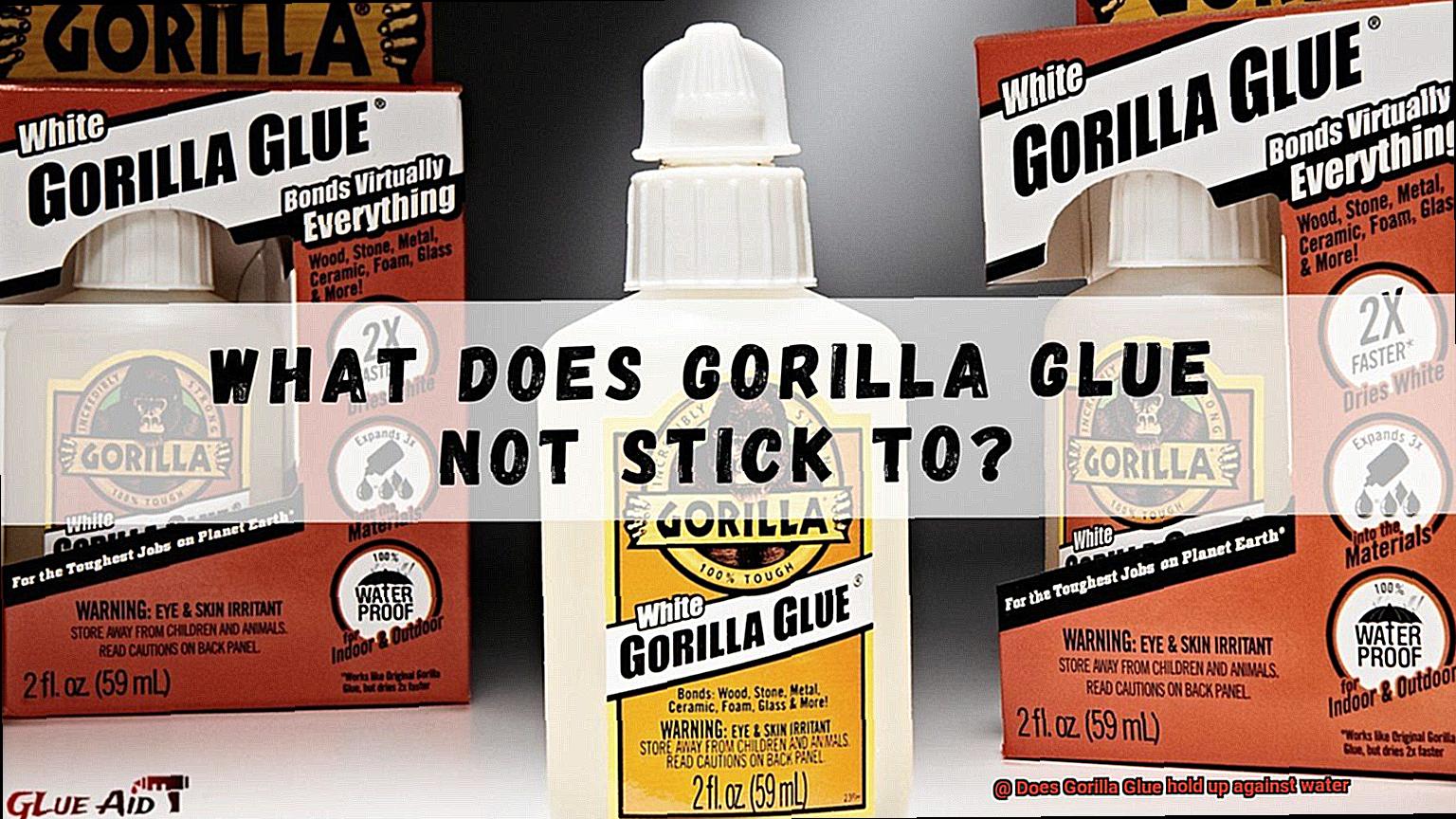
How to Use Gorilla Glue Sparingly
Gorilla Glue can be a lifesaver when it comes to bonding surfaces, but it can also be a nightmare if you end up using too much. There are some essential tips and tricks that you can use to make sure that you use Gorilla Glue sparingly for your next project.
Tip #1: Use a small amount of glue
It’s important to remember that Gorilla Glue expands as it dries. So, start by applying a small amount of glue to one surface. Using too much can cause the glue to expand and potentially damage the surrounding area. A thin layer of glue is all you need to create a strong bond.
Tip #2: Use the right applicator
Using a precision applicator or a toothpick can help you apply the glue exactly where you need it. This will help you avoid using too much glue and creating a mess. You can also use a small brush to apply the glue precisely where it’s needed.
Tip #3: Clamp the surfaces together
After applying the glue, clamp the surfaces together for at least 1-2 hours. This will help the glue bond properly without any excess glue seeping out. Be careful not to apply too much pressure, as this could cause excess glue to spread and create a mess.
Tip #4: Clean up excess glue
If you do happen to apply too much glue, use a damp cloth or paper towel to wipe away any excess before it dries. This will prevent any hard-to-remove residue from forming. It’s important to work quickly when using Gorilla Glue as it dries rapidly and can be difficult to remove once it has set.
Tip #5: Store the glue properly
To ensure that your Gorilla Glue stays fresh and doesn’t dry out, store it in a cool, dry place with the cap tightly sealed. This will help your glue last longer and be ready for your next project. Avoid storing it in areas with high humidity or temperatures, as this can cause the glue to dry out and become less effective.
Is Gorilla Glue Completely Waterproof?
Look no further. Gorilla Glue is a top-rated adhesive that’s known for its strength and versatility, making it a popular choice for DIY projects. It claims to be completely waterproof, making it ideal for use in wet conditions. But is it really completely waterproof? Let’s take a closer look.
While Gorilla Glue can withstand some exposure to water, prolonged exposure can weaken its bond. Factors such as temperature, humidity, and the type of material being bonded can also affect its performance. To ensure the best results, it’s crucial to follow the manufacturer’s instructions carefully.
Experts have conducted various experiments to test the water resistance of Gorilla Glue. In most cases, the glue held up even when exposed to water for extended periods. However, there were instances where the glue failed to hold up against water.
To achieve a strong and lasting bond when using Gorilla Glue in wet conditions, make sure to clean and dry the surfaces being bonded thoroughly before applying the glue sparingly. It’s also essential to allow the glue to dry completely before exposing it to moisture.
Common Mistakes When Using Gorilla Glue in Wet Environments
This adhesive is known for its strength and waterproof properties. However, there are some common mistakes you should avoid to ensure a reliable bond. As an expert in this field, I have compiled some key tips to help you avoid these mistakes and achieve the best results.
Firstly, it’s essential to prepare the surface properly before applying the glue. If the surface is wet or dirty, the glue won’t adhere correctly. So make sure you clean and dry the surface before applying the glue. A clean and dry surface will allow the adhesive to penetrate and create a strong bond.
Secondly, don’t use too much glue. Gorilla Glue expands as it dries, which can create excess foam and weaken the bond. Applying a thin layer of glue and clamping the surfaces together until the glue is completely dry is the best approach. Remember, a little goes a long way.
Thirdly, clamping the surfaces together while the glue dries is crucial for a strong bond. If you don’t apply enough pressure or leave the surfaces unclamped, the bond may not hold up in wet environments. The clamping force should be enough to ensure that both surfaces make good contact with each other.
Lastly, Gorilla Glue requires moisture to activate and create a strong bond. However, high humidity can cause it to cure too quickly or not at all. Therefore, it’s best to apply Gorilla Glue in low humidity environments. If you are working in an area with high humidity, consider using a dehumidifier or waiting for a drier day to work on your project.
Also Read: Is Gorilla Super Glue Waterproof?
Conclusion
In conclusion, Gorilla Glue is a remarkable adhesive that can withstand water and other harsh elements with ease. Thanks to its unique chemical composition, it expands as it dries, filling gaps and forging an unbreakable bond that resists heat, cold, chemicals, and of course, water. However, while Gorilla Glue is impressively water-resistant, it’s not entirely waterproof. Therefore, it’s crucial to follow the manufacturer’s instructions carefully and prepare the surface adequately before applying the glue.
To achieve a robust and long-lasting bond when using Gorilla Glue in damp environments, use it sparingly and clamp surfaces tightly together while the glue dries. It’s also essential to control environmental factors like temperature and humidity to ensure optimal bonding conditions. Lastly, wipe away excess glue immediately to avoid any mishaps.
By avoiding common mistakes such as overusing the glue or failing to clamp surfaces together properly, you can guarantee that your DIY projects remain sturdy and secure regardless of what Mother Nature throws their way.
Overall, Gorilla Glue is a game-changer in the world of adhesives. Its strength and durability make it ideal for a wide range of applications both indoors and outdoors.

